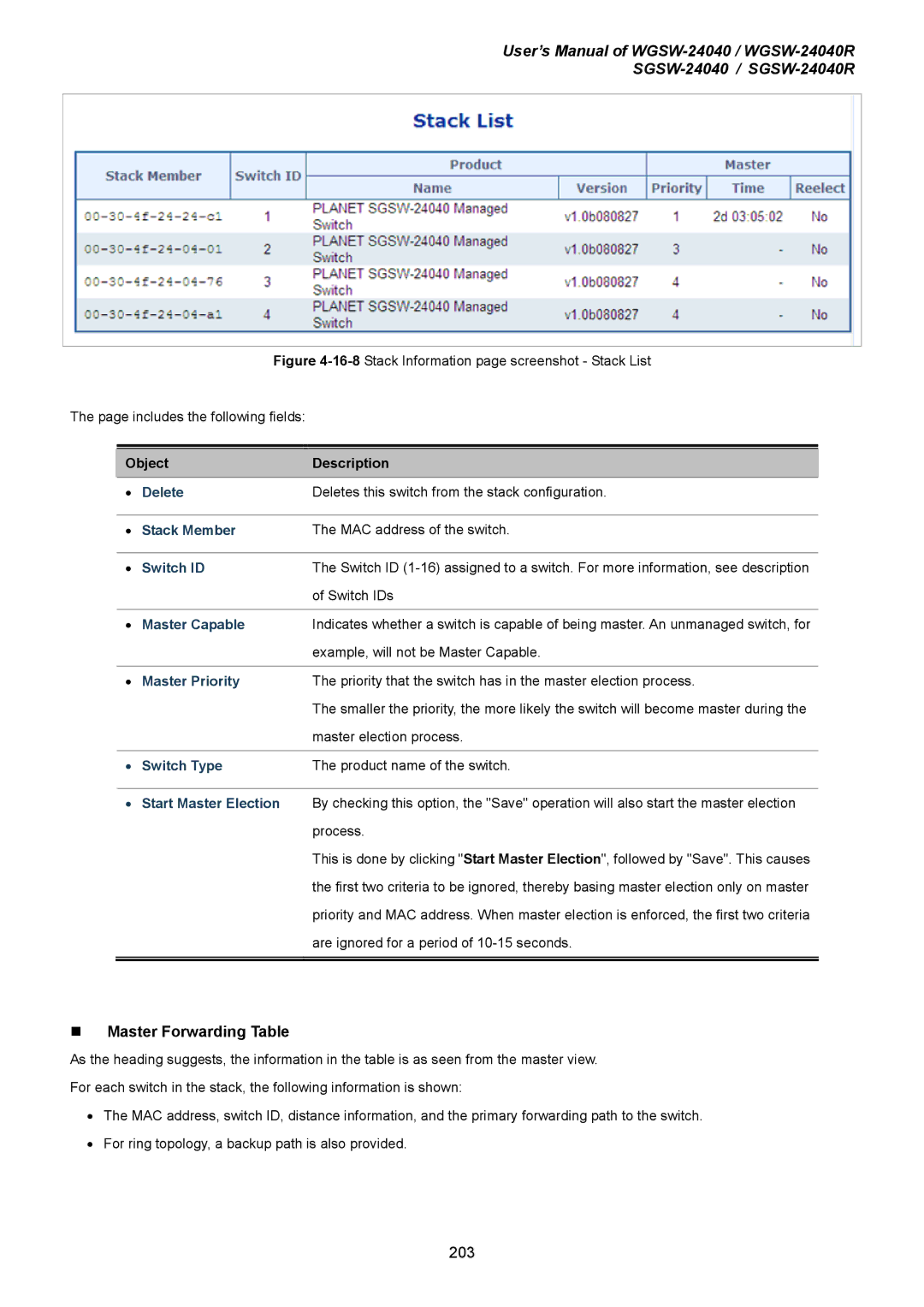
User’s Manual of
Figure 4-16-8 Stack Information page screenshot - Stack List
The page includes the following fields:
|
|
|
Object | Description | |
• | Delete | Deletes this switch from the stack configuration. |
|
|
|
• | Stack Member | The MAC address of the switch. |
|
|
|
• | Switch ID | The Switch ID |
|
| of Switch IDs |
|
|
|
• | Master Capable | Indicates whether a switch is capable of being master. An unmanaged switch, for |
|
| example, will not be Master Capable. |
|
|
|
• | Master Priority | The priority that the switch has in the master election process. |
|
| The smaller the priority, the more likely the switch will become master during the |
|
| master election process. |
|
|
|
• | Switch Type | The product name of the switch. |
•Start Master Election By checking this option, the "Save" operation will also start the master election process.
This is done by clicking "Start Master Election", followed by "Save". This causes the first two criteria to be ignored, thereby basing master election only on master priority and MAC address. When master election is enforced, the first two criteria are ignored for a period of
Master Forwarding Table
As the heading suggests, the information in the table is as seen from the master view.
For each switch in the stack, the following information is shown:
•The MAC address, switch ID, distance information, and the primary forwarding path to the switch.
•For ring topology, a backup path is also provided.
203
